Cell context-dependent CFI-1/ARID3 functions control neuronal terminal differentiation
- PMID: 36897776
- PMCID: PMC10124151
- DOI: 10.1016/j.celrep.2023.112220
Cell context-dependent CFI-1/ARID3 functions control neuronal terminal differentiation
Abstract
AT-rich interaction domain 3 (ARID3) transcription factors are expressed in the nervous system, but their mechanisms of action are largely unknown. Here, we provide, in vivo, a genome-wide binding map for CFI-1, the sole C. elegans ARID3 ortholog. We identify 6,396 protein-coding genes as putative direct targets of CFI-1, most of which encode neuronal terminal differentiation markers. In head sensory neurons, CFI-1 directly activates multiple terminal differentiation genes, thereby acting as a terminal selector. In motor neurons, however, CFI-1 acts as a direct repressor, continuously antagonizing three transcriptional activators. By focusing on the glr-4/GRIK4 glutamate receptor locus, we identify proximal CFI-1 binding sites and histone methyltransferase activity as necessary for glr-4 repression. Rescue assays reveal functional redundancy between core and extended DNA-binding ARID domains and a strict requirement for REKLES, the ARID3 oligomerization domain. Altogether, this study uncovers cell-context-dependent mechanisms through which a single ARID3 protein controls the terminal differentiation of distinct neuron types.
Keywords: ARID proteins; ARID3; C. elegans; CFI-1; CP: Neuroscience; CRISPR-Cas9 gene editing; ChIP-seq; neuronal differentiation; transcription factors.
Copyright © 2023 The Author(s). Published by Elsevier Inc. All rights reserved.
Conflict of interest statement
Declaration of interests The authors declare no competing interests.
Figures
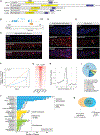
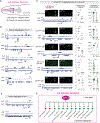

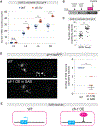
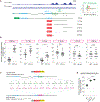
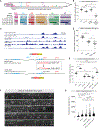

Similar articles
-
CFI-1 functions unilaterally to restrict gap junction formation in C. elegans.Development. 2025 Jan 1;152(1):dev202955. doi: 10.1242/dev.202955. Epub 2025 Jan 7. Development. 2025. PMID: 39679967 Free PMC article.
-
The LIM and POU homeobox genes ttx-3 and unc-86 act as terminal selectors in distinct cholinergic and serotonergic neuron types.Development. 2014 Jan;141(2):422-35. doi: 10.1242/dev.099721. Epub 2013 Dec 18. Development. 2014. PMID: 24353061 Free PMC article.
-
Control of neuronal subtype identity by the C. elegans ARID protein CFI-1.Genes Dev. 2002 Apr 15;16(8):972-83. doi: 10.1101/gad.976002. Genes Dev. 2002. PMID: 11959845 Free PMC article.
-
Brn3/POU-IV-type POU homeobox genes-Paradigmatic regulators of neuronal identity across phylogeny.Wiley Interdiscip Rev Dev Biol. 2020 Jul;9(4):e374. doi: 10.1002/wdev.374. Epub 2020 Feb 3. Wiley Interdiscip Rev Dev Biol. 2020. PMID: 32012462 Review.
-
Securing Neuronal Cell Fate in C. elegans.Curr Top Dev Biol. 2016;116:167-80. doi: 10.1016/bs.ctdb.2015.11.011. Epub 2016 Jan 23. Curr Top Dev Biol. 2016. PMID: 26970619 Review.
Cited by
-
A multi-omic single-cell landscape of cellular diversification in the developing human cerebral cortex.Comput Struct Biotechnol J. 2024 May 17;23:2173-2189. doi: 10.1016/j.csbj.2024.05.019. eCollection 2024 Dec. Comput Struct Biotechnol J. 2024. PMID: 38827229 Free PMC article.
-
Arid3c identifies an uncharacterized subpopulation of V2 interneurons during embryonic spinal cord development.Front Cell Neurosci. 2024 Oct 16;18:1466056. doi: 10.3389/fncel.2024.1466056. eCollection 2024. Front Cell Neurosci. 2024. PMID: 39479525 Free PMC article.
-
A molecular atlas of adult C. elegans motor neurons reveals ancient diversity delineated by conserved transcription factor codes.Cell Rep. 2024 Mar 26;43(3):113857. doi: 10.1016/j.celrep.2024.113857. Epub 2024 Feb 29. Cell Rep. 2024. PMID: 38421866 Free PMC article.
-
Maintenance of neuronal identity in C. elegans and beyond: Lessons from transcription and chromatin factors.Semin Cell Dev Biol. 2024 Feb 15;154(Pt A):35-47. doi: 10.1016/j.semcdb.2023.07.001. Epub 2023 Jul 11. Semin Cell Dev Biol. 2024. PMID: 37438210 Free PMC article. Review.
-
CFI-1 functions unilaterally to restrict gap junction formation in C. elegans.Development. 2025 Jan 1;152(1):dev202955. doi: 10.1242/dev.202955. Epub 2025 Jan 7. Development. 2025. PMID: 39679967 Free PMC article.
References
-
- Wilsker D, Patsialou A, Dallas PB, and Moran E (2002). ARID proteins: a diverse family of DNA binding proteins implicated in the control of cell growth, differentiation, and development. Cell Growth Differ. 13, 95–106. - PubMed
Publication types
MeSH terms
Substances
Grants and funding
LinkOut - more resources
Full Text Sources
Molecular Biology Databases
Miscellaneous

